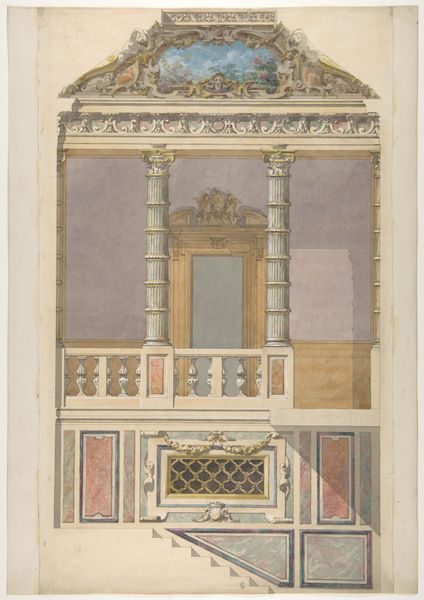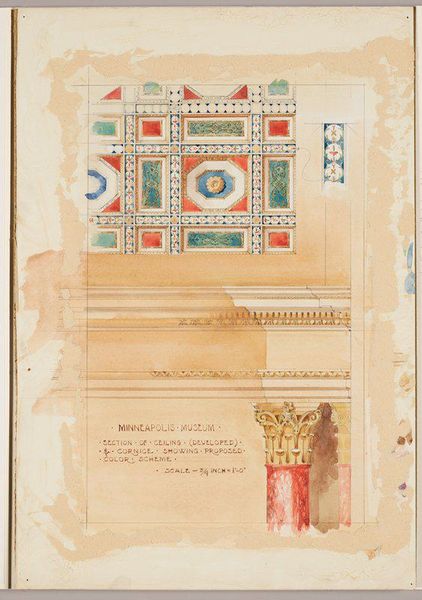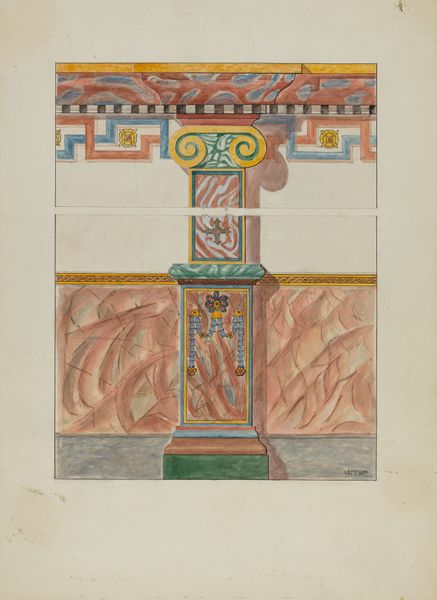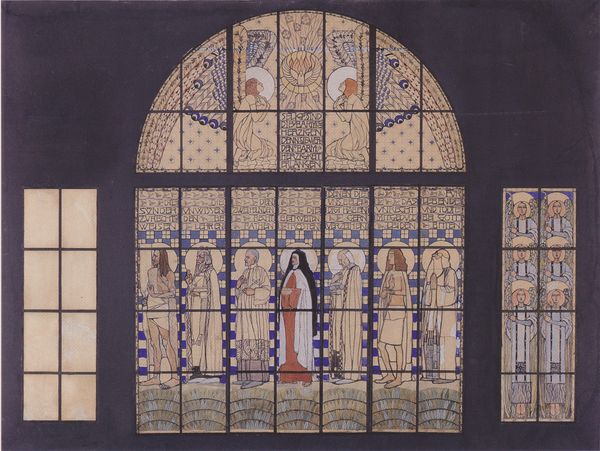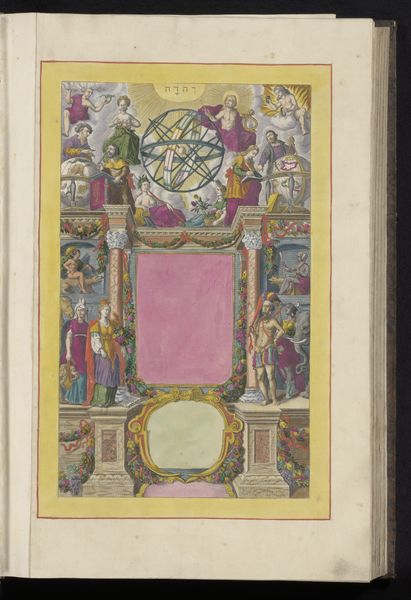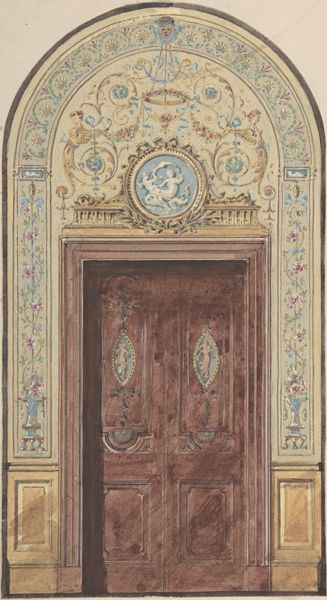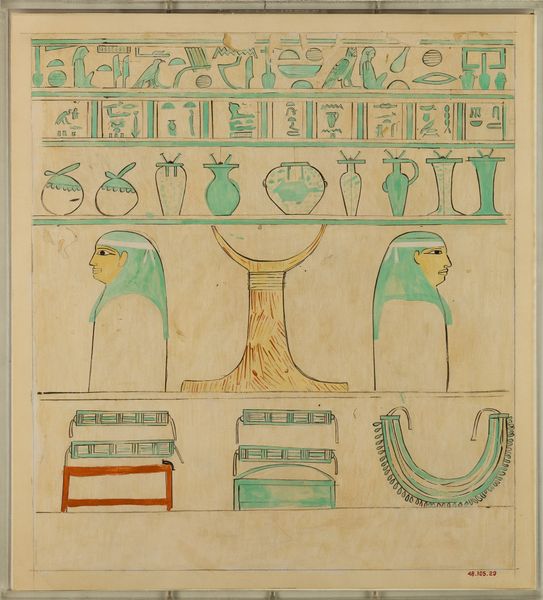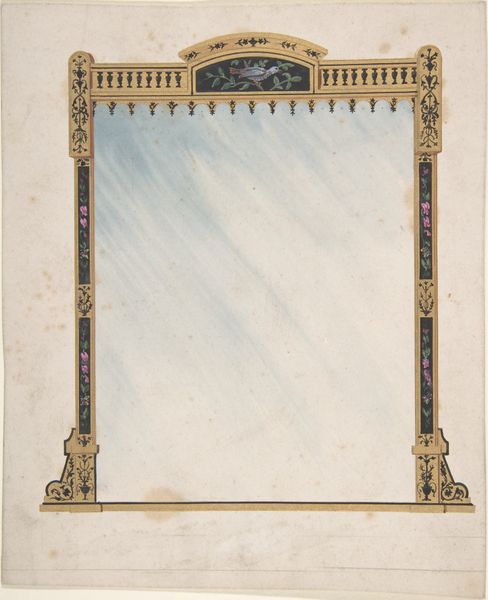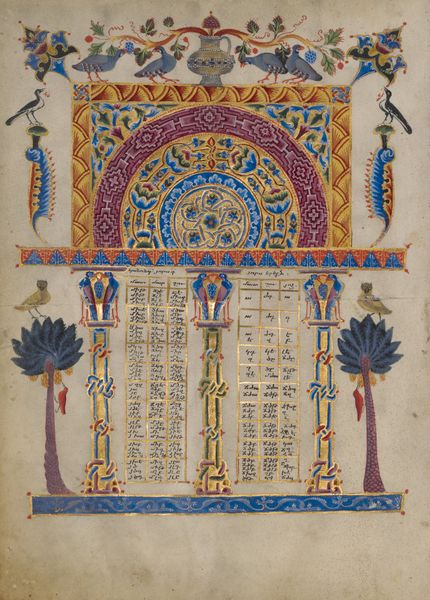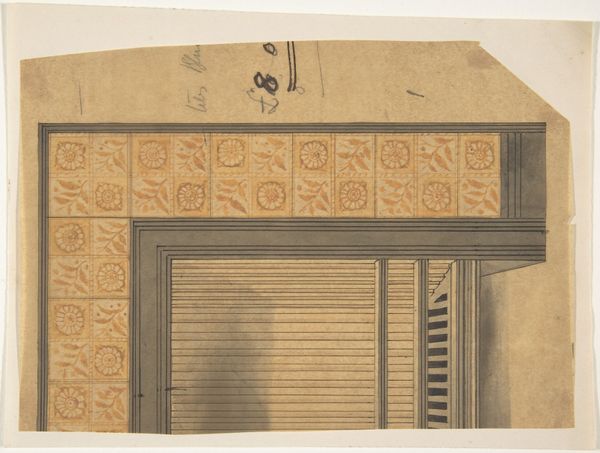
Decorated Doorway to North Chapel, Tomb of Puyemre 1473 BC
0:00
0:00
drawing, tempera, painting, paper, watercolor, architecture
#
drawing
#
narrative-art
#
tempera
#
painting
#
ancient-egyptian-art
#
perspective
#
paper
#
traditional architecture
#
watercolor
#
egypt
#
geometric
#
ancient-mediterranean
#
history-painting
#
watercolor
#
architecture
Dimensions: facsimile: h. 61 cm (24 in); w. 34.5 cm (13 9/16 in); scale 1:10; framed: h. 64.5 cm (25 3/8 in); w. 38.1 cm (15 in)
Copyright: Public Domain
Editor: So, this is "Decorated Doorway to North Chapel, Tomb of Puyemre," from around 1473 BC, by Norman de Garis Davies. It looks like watercolor, tempera, and drawing on paper. I find the depiction of the doorway striking – there’s such attention to the geometric details, hieroglyphs and the glimpses of figures inside. How do you interpret this work? Curator: This piece, while seemingly a straightforward architectural rendering, is steeped in the complex power dynamics of ancient Egypt. We see not just a doorway, but a carefully constructed symbol of access to the afterlife, meticulously controlled by the elite. Notice how the hieroglyphs aren’t merely decorative; they are potent texts, dictating who gets to pass through, who gets to be remembered. Editor: That's interesting, it feels a little contradictory to see it now, almost like a document of power for scholars to view. Does the doorway itself suggest something about societal hierarchies? Curator: Absolutely. The vibrant colours, the precise geometry, and the imposing scale – all served to reinforce the Pharaoh’s divine authority and the power of the priestly class. But I encourage us to look beyond the doorway. Consider who *didn't* have access to such elaborate funerary rites, whose stories weren’t deemed worthy of inscription. This image speaks volumes, not only about the life of Puyemre but about the silenced voices of an entire society. What narratives do you think are missing here? Editor: I guess it's easy to get lost in the details and forget the broader context. I suppose a view such as this presents the history we see, one not always encompassing true equity. Curator: Precisely! And that critical awareness allows us to engage with art, and its history, more ethically and more responsibly. Editor: I'll definitely keep that in mind going forward, thinking about whose stories we aren’t seeing and why. Thank you!
Comments
No comments
Be the first to comment and join the conversation on the ultimate creative platform.

